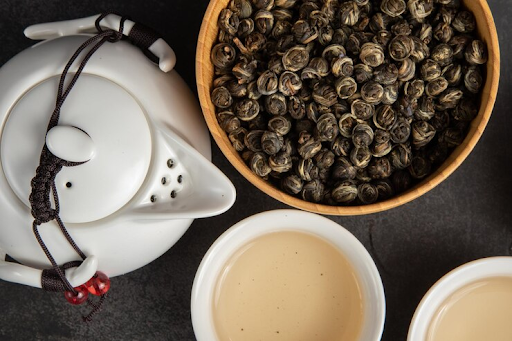In the world of tea, there exists a beverage that combines tradition with innovation, depth with subtlety, and richness with delicacy: roasted oolong milk tea. This delightful concoction marries the robust flavors of roasted oolong tea with the creamy sweetness of milk, resulting in a drink that tantalizes the taste buds and warms the soul. Join us on a journey as we delve into the intricacies of roasted oolong milk tea, exploring its flavors, origins, and the art of brewing the perfect cup.
The Essence of Roasted Oolong
Oolong tea, known for its complex flavor profiles and varying levels of oxidation, forms the heart of roasted oolong milk tea. Unlike green tea, which is unoxidized, and black tea, which is fully oxidized, oolong tea undergoes partial oxidation, resulting in a unique balance of floral, fruity, and roasted notes. Roasted oolong, in particular, is prized for its deep, toasty aroma and rich, caramelized flavor, making it the perfect base for milk tea.
The Art of Roasting Oolong
The process of roasting oolong tea is as much an art as it is a science. Skilled tea masters carefully control the temperature and duration of roasting to coax out the desired flavors while preserving the tea’s delicate nuances. Depending on the desired outcome, oolong tea may be roasted lightly to enhance its floral notes or more deeply to develop complex, toasty flavors reminiscent of caramel and nuts. The result is a tea that boasts depth, complexity, and a satisfyingly smooth finish.
The Creamy Addition: Milk in Tea
While oolong tea can be enjoyed on its own, adding milk to the equation elevates the experience to new heights. The creamy sweetness of milk softens the boldness of roasted oolong, creating a harmonious balance of flavors and textures. Milk tea aficionados often debate the merits of different types of milk, from classic dairy to plant-based alternatives like almond or oat milk, each lending its own unique character to the final brew.
Brewing the Perfect Cup
Brewing roasted oolong milk tea requires a delicate touch and careful attention to detail. Start by selecting high-quality roasted oolong tea leaves, preferably loose-leaf for maximum flavor. Bring fresh water to a boil, then allow it to cool slightly before steeping the tea leaves to avoid scalding. Depending on personal preference, the tea can be steeped for anywhere from 3 to 5 minutes to achieve the desired strength. Finally, add a splash of milk and a touch of sweetener if desired, then sit back, relax, and savor the rich, velvety goodness of roasted oolong milk tea.
Exploring Flavor Profiles
One of the joys of roasted oolong milk tea lies in its versatility. Depending on factors such as roast level, tea variety, and milk type, the flavor profile of the final brew can vary widely. Lightly roasted oolong teas may exhibit floral and fruity notes, while darker roasts may lean towards caramelized, nutty flavors. Experimenting with different combinations of tea and milk allows for endless exploration and discovery, ensuring that every cup is a unique and delightful experience.
Health Benefits
In addition to its delicious flavor, roasted oolong milk tea offers a host of health benefits. Oolong tea is rich in antioxidants, which help protect the body from free radical damage and support overall health. Additionally, the combination of tea and milk provides a source of calcium and other essential nutrients, making roasted oolong milk tea not only a treat for the taste buds but also a nourishing beverage for the body.
Conclusion
In conclusion, roasted oolong milk tea is a beverage that delights the senses and nourishes the body. With its rich, toasty aroma, complex flavor profile, and creamy texture, it offers a truly indulgent tea-drinking experience. Whether enjoyed as a morning pick-me-up, an afternoon treat, or a soothing evening ritual, roasted oolong milk tea never fails to satisfy. So why not embark on your own journey of discovery and unlock the richness of flavor that awaits in every cup?




